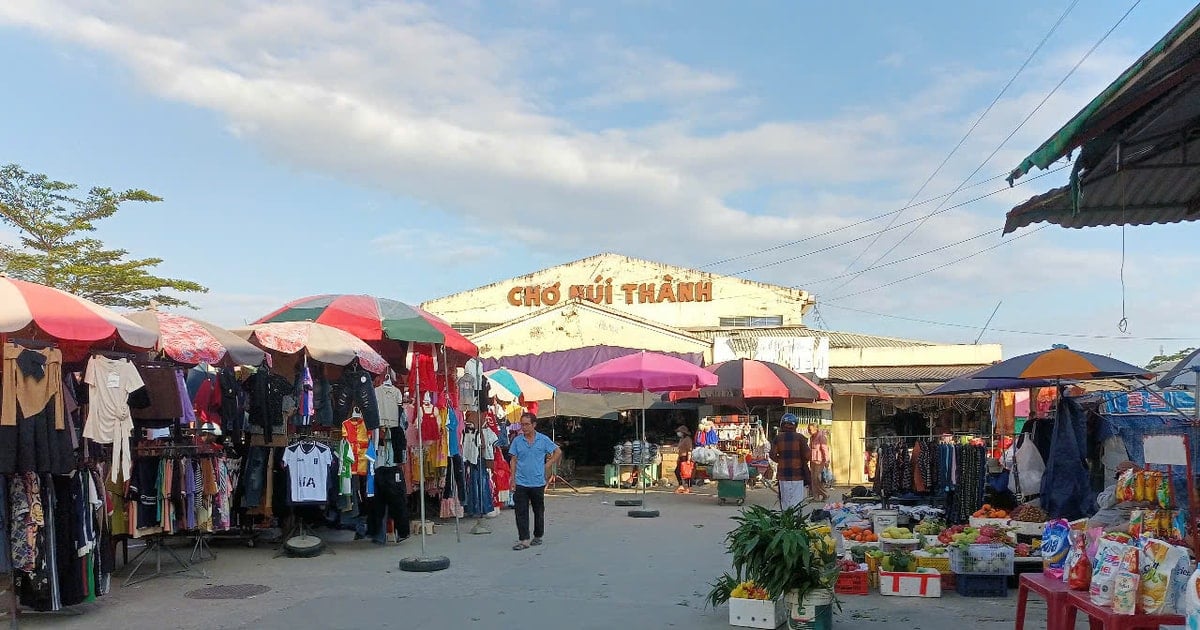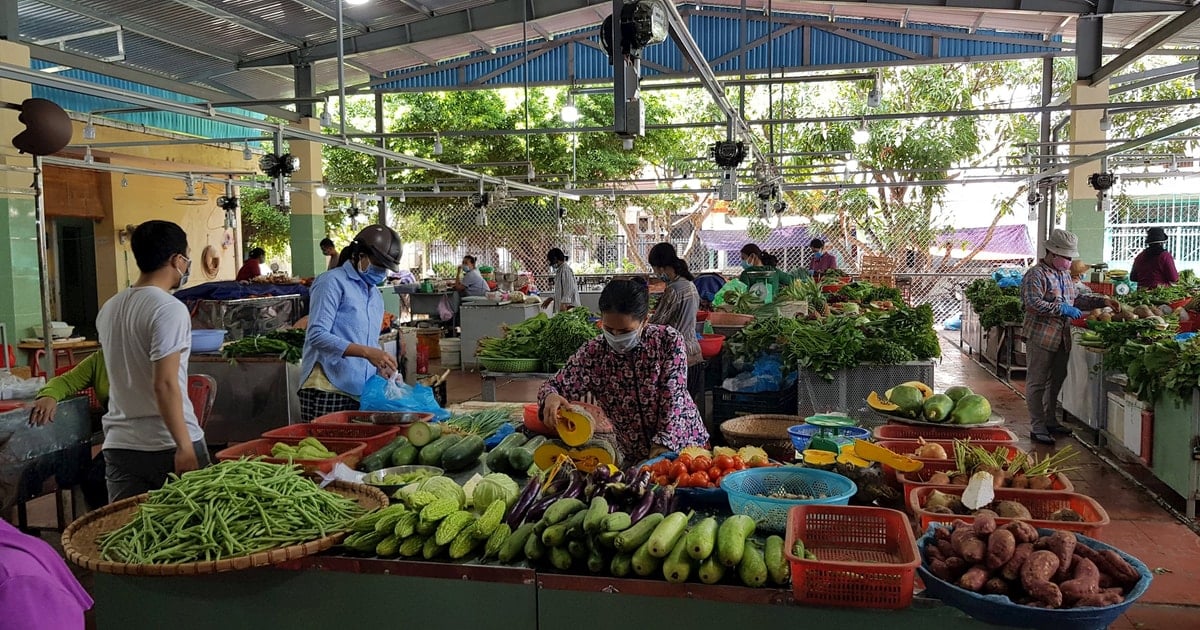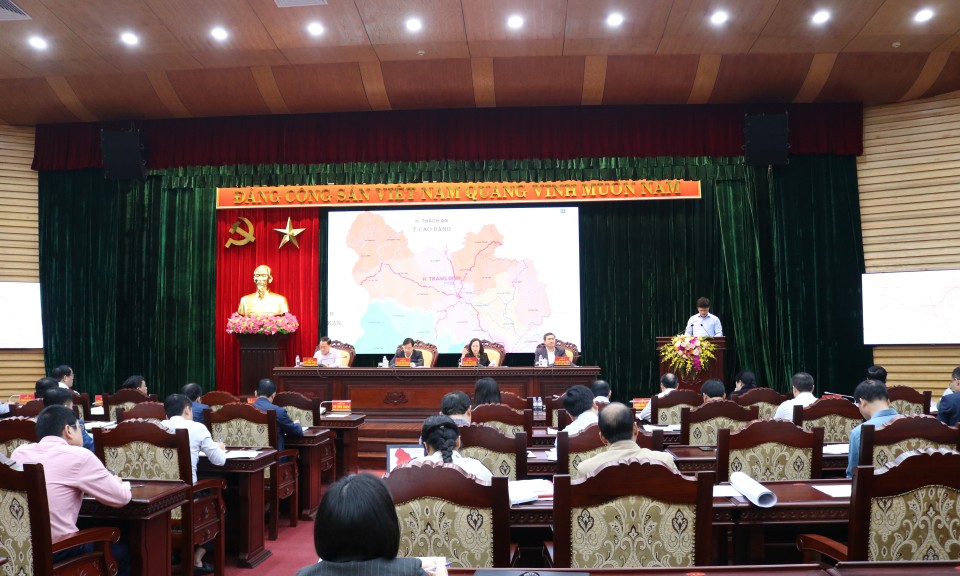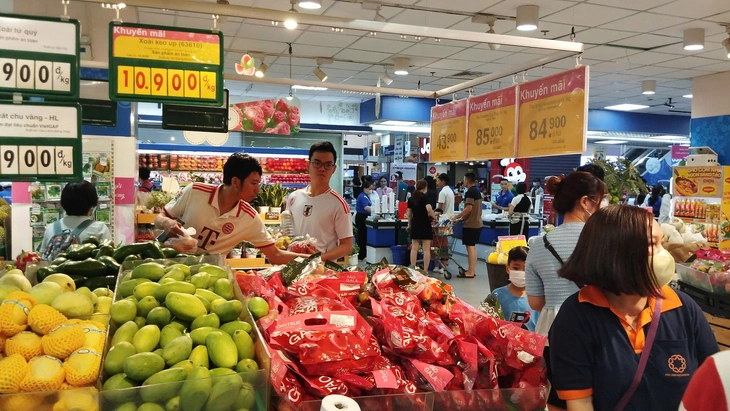On the recent September 2nd holiday, a group of friends from Dong Nai dropped by and expressed their desire to visit Phan Thiet market and buy some souvenirs. I took my friends for a walk around the market. Apart from the bustling food and fresh food stalls, most of the remaining stalls were deserted and devoid of shoppers.
My group of friends were surprised and asked me, “On holidays like this, if vendors can’t sell, what will it be like on normal days?”. I asked back, “Do you like the feeling of going to the market to shop?”. My friend thought for a moment and said, “I really like it because the goods are diverse, but Phan Thiet market is too hot, the space is narrow, the stalls are close together in the aisles, the goods are not hung as diversely as in shops, the most annoying thing is going upstairs…”. Therefore, after walking for a while, the whole group was sweating, but they still hadn’t chosen any satisfactory gifts. In the end, the group had to choose to go to the supermarket to shop, even though they really wanted to go back to the feeling of going to the market like 10 years ago.

There are many other reasons why the traditional market here was once a must-see destination for both tourists and locals. However, in recent years, traders in the market have been complaining about sluggish business, with more sellers than buyers, and stalls gradually closing due to lack of customers. Binh Thuan Newspaper has published many articles reflecting the above situation, with many traders complaining about the shortcomings they are facing, forcing them to move stalls and change their business direction when the number of customers coming to the market has decreased by 70-80%. So is it true that the traditional market has passed its golden age?

According to a survey by the Ministry of Industry and Trade, 40% of goods are still circulated through market networks, especially in rural areas, this rate is up to 70%. Therefore, markets still occupy an important position in the daily buying and selling activities of Vietnamese people. A typical example is the traditional market in Phan Ri Cua town (Tuy Phong district), although there are still supermarkets and convenience stores, the market is still the lifeblood not only of the people here but also of neighboring localities. The hustle and bustle still exists every day in this market even though the market has not been rebuilt. Perhaps that is why, after a period of time, convenience stores have competed with the traditional market here, and had to "admit defeat"!

So is it true that the story of traditional markets being deserted and unsold only happens to markets in big cities? In addition to objective reasons such as the explosion of convenient online business methods, many stores and supermarkets infiltrating into residential areas with airy, clean spaces, publicly listed prices... one of the equally important reasons why traditional markets "lose points" is because of degraded infrastructure or inappropriate new construction, unsynchronized stalls, unlisted prices, and still haggling... Therefore, in order to survive, traders in the markets must change!

There is no longer the scene of opening stalls in the morning waiting for customers to come, but now some traders have to approach the market through social networking sites, both livestreaming and posting product information on digital platforms... At the same time, to attract customers to the market again, not only traders but also local authorities and the Market Management Board need to have a consensus on buying and selling methods, and innovate thinking. That is, it is necessary to list prices, stalls need to be more neat, "happy for customers to come and satisfied for customers to go", no soliciting, no overcharging, goods have clear origins. In particular, there need to be stalls selling typical products of each locality, specialties of Binh Thuan, with many promotional programs, stimulating demand to increase the competitiveness of traditional markets compared to modern retail channels... It is necessary to change the business method appropriately, so that no matter where you sell, customers will come.
In recent years, the provincial authorities have implemented many solutions to improve the efficiency of traditional markets. In particular, districts are assigned to review the local market network to suit shopping needs and socio-economic development planning, urban planning, and land use planning. On that basis, it is possible to convert the functions of ineffective markets and socialize markets in a modern and civilized direction.
If each trader is willing to change, together with the Market Management Board and relevant agencies, to develop more proactive and smarter sales methods, then turning the traditional market into a special destination in the journey to explore and visit Binh Thuan is no longer too far-fetched.
Source



![[Photo] Visiting Cu Chi Tunnels - a heroic underground feat](https://vstatic.vietnam.vn/vietnam/resource/IMAGE/2025/4/8/06cb489403514b878768dd7262daba0b)














































































Comment (0)